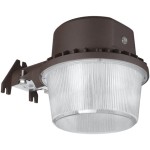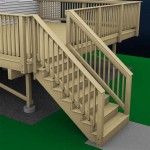How to Plant Bamboo Outdoors
Bamboo, with its graceful stalks and lush foliage, adds a touch of elegance and exotic charm to any outdoor space. Whether you desire a privacy screen, a windbreak, or simply a captivating ornamental element, planting bamboo outdoors can fulfill your landscaping goals. This comprehensive guide outlines the essential steps to ensure successful bamboo planting, from selecting the right species to providing proper care.
1. Choosing the Right Bamboo Species
The first step in planting bamboo outdoors is selecting the appropriate species. Bamboo varieties come in a wide range of sizes, growth habits, and aesthetic qualities. Consider the following factors:
- Space Requirements: Some bamboo species can grow to towering heights, while others remain relatively compact. Measure the available space and consult with a nursery or expert to determine the most suitable species for your garden.
- Growth Habit: Bamboo is categorized into two main types: running and clumping. Running bamboo spreads aggressively through underground rhizomes, which can be invasive if not properly managed. Clumping bamboo, on the other hand, grows in tight clusters, making it a more controlled option. For beginners, clumping bamboo is generally recommended.
- Climate and Soil Conditions: Bamboo thrives in warm, humid climates with well-drained soil. Research the specific requirements of your chosen species to ensure compatibility with your local growing conditions.
- Aesthetic Preference: Bamboo offers a wide array of colors, textures, and stalk sizes. Consider your desired aesthetic and choose a species that aligns with your vision.
2. Preparing the Planting Site
Once you have selected your bamboo species, it's crucial to prepare the planting site adequately. This paves the way for healthy growth and minimizes potential problems.
- Sunlight Exposure: Bamboo prefers full sun to partial shade. Select a location that receives at least six hours of sunlight daily, especially if you have chosen a species that thrives in warmer climates.
- Soil Drainage: Bamboo requires well-drained soil to prevent root rot. If your soil is prone to waterlogging, amend it with organic matter such as compost or aged manure.
- Soil pH: Bamboo prefers slightly acidic to neutral soil with a pH ranging from 6.0 to 7.0. Test your soil pH and adjust accordingly using lime or sulfur, if necessary.
- Root Barrier (Running Bamboo): If you have chosen a running bamboo species, installing a root barrier is highly recommended to prevent its aggressive spread. Choose a barrier that is at least 3 feet deep and 1 foot wide.
3. Planting the Bamboo
With the planting site prepared, you are ready to plant your bamboo. Follow these steps:
- Dig the Hole: Excavate a hole that is twice as wide and as deep as the bamboo's root ball.
- Position the Plant: Place the bamboo in the hole, ensuring that the crown (where the roots meet the stem) is level with the soil.
- Backfill the Hole: Gradually fill the hole with soil, gently tamping it down as you go. Avoid compacting the soil too tightly, as this can hinder root development.
- Water Thoroughly: After planting, water the bamboo deeply to settle the soil and ensure adequate moisture.
- Mulch the Base: Apply a 2-4 inch layer of organic mulch around the base of the bamboo, but avoid burying the crown. Mulch helps retain moisture, suppress weeds, and regulate soil temperature.
4. Caring for Your Bamboo
Once planted, your bamboo requires regular care to thrive. Here are some essential maintenance practices:
- Watering: During the first year after planting, water your bamboo regularly, especially during dry periods. Once established, bamboo generally becomes drought-tolerant, but supplemental watering may be necessary during prolonged droughts.
- Fertilizing: Bamboo benefits from occasional fertilization, especially during its active growth period (spring and summer). Use a balanced fertilizer formulated for ornamental plants, following the manufacturer's instructions.
- Pruning: Regular pruning helps to maintain bamboo's shape and prevent overgrowth. Cut back any dead or damaged stalks. To promote new growth, prune older stalks in the spring or early summer.
- Pest and Disease Control: Bamboo is generally resistant to pests and diseases. However, keep an eye out for common problems such as aphids, scale insects, and bamboo mites.
With proper selection, preparation, and care, bamboo can flourish in your outdoor space, rewarding you with its captivating beauty and unique charm. By following these steps, you can create a thriving bamboo grove that will enhance the visual appeal and ecological diversity of your garden for years to come.

How To Plant And Care For Bamboo Outdoors

Outdoor Bamboo Plants For Sale Buying Growing Guide Trees Com

Bamboo Plant Get To Know It Before You Grow Hgtv

Outdoor Bamboo Plants For Sale Buying Growing Guide Trees Com

Golden Bamboo For Sale Buying Growing Guide Trees Com

Outdoor Bamboo Plants Top Growing Tips

Garteninspiration Kreativ Bambus Planten Terrasse Und Balkon Jardines Verticales Modernos Paisajismo De Patio

Ly Natural Indoor Outdoor 5 Ft Bamboo Artificial Tree Uv Resistant 5510 The Home

Outdoor Bamboo Plants For Sale Buying Growing Guide Trees Com

Bamboo Planting Growing And Buying Plants Bbc Gardeners World Magazine








